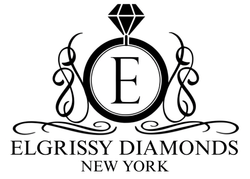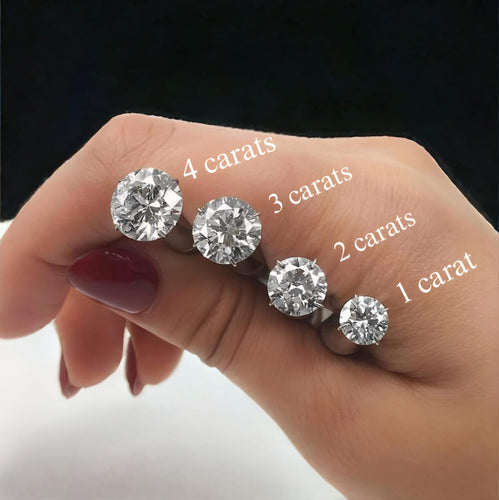The allure of buying diamonds online is undeniable. With just a few clicks, you can browse through an extensive selection of gemstones, compare prices, and even customize your purchase—all from the comfort of your home. However, as the online diamond market grows, so do the risks associated with it.
Navigating this digital marketplace can be challenging, especially for first-time buyers. The absence of face-to-face interactions, the inability to physically inspect the diamond, and the potential for encountering fraudulent sellers make it a process fraught with uncertainty. Recognizing the warning signs of potential scams and understanding how to verify a diamond’s authenticity are essential steps for ensuring a safe and successful purchase.
Warning Signs of Fraud When Buying Diamonds Online
Missing or Fake Certification
One of the most critical aspects of buying a diamond is ensuring it comes with a legitimate certification from a recognized gemological laboratory, such as GIA (Gemological Institute of America), AGS (American Gem Society), or IGI (International Gemological Institute). Certifications provide an objective assessment of the diamond’s quality, including its cut, clarity, color, and carat weight.
When a seller fails to provide a certification or offers documents from obscure or unknown organizations, it’s a major red flag. Without certification, there’s no way to verify whether the diamond is natural, synthetic, or treated to enhance its appearance. Always cross-check the details of the certificate with the issuing laboratory’s online database to confirm authenticity.
Unrealistically Low Prices
If a deal seems too good to be true, it often is. While online sellers may offer lower prices than brick-and-mortar stores due to reduced overhead costs, significant price discrepancies could indicate fraud or substandard quality. Scammers often lure unsuspecting buyers with "discounted" diamonds that are actually lab-grown, synthetic, or even fake stones.
To avoid this, use price verification tools such as RapNet or Diamond Karma to compare prices based on the diamond’s 4Cs (Cut, Clarity, Color, and Carat). Be wary of sellers who fail to explain the reason behind unusually low prices.
Lack of Transparency in Business Practices
Reputable online diamond retailers provide clear and detailed information about their business, including contact details, return policies, and ownership. If a website lacks this information or provides only generic email addresses or no phone number, it’s a warning sign.
Other transparency issues to watch for include unclear product descriptions, use of stock photos instead of actual diamond images, and vague customer service responses. Authentic sellers are upfront about every detail of the product and are willing to answer all questions thoroughly.
Suspicious or Nonexistent Customer Reviews
Authentic reviews can reveal a lot about a seller’s credibility. Be cautious of platforms with no reviews or overwhelmingly positive but generic feedback that may have been fabricated. Similarly, a lack of presence on reputable third-party review sites, such as Trustpilot or the Better Business Bureau, is a concern.
When assessing reviews, look for detailed experiences from buyers, mentions of return processes, and transparency in product descriptions. A legitimate seller typically has a mix of positive and constructive feedback, reflecting genuine customer experiences.
Tools and Methods for Price Verification
Leveraging Professional Price Calculators
When buying a diamond online, understanding its fair market value is essential. Professional tools like RapNet, StoneAlgo, and Diamond Karma are designed to provide price estimates based on a diamond's specific characteristics: carat weight, color, clarity, and cut. These platforms aggregate data from thousands of sellers to help buyers identify reasonable price ranges and avoid overpaying or falling for suspiciously low offers.
For example, RapNet's price list is widely used within the diamond industry as a benchmark for wholesale pricing. While it may not reflect retail markups, it gives a clear idea of whether the pricing aligns with industry standards. Understanding how these calculators work can arm you with the knowledge to make a smarter purchase.
Comparing Prices Across Reputable Retailers
Another effective method to ensure you're paying a fair price is to compare similar diamonds across multiple trusted platforms. Online retailers like James Allen, Blue Nile, and Brilliant Earth often provide detailed product descriptions, including high-resolution images and 360-degree views of the diamonds.
By analyzing listings of diamonds with identical or similar specifications, you can spot anomalies in pricing. Keep in mind that subtle differences in a diamond's cut quality or fluorescence can significantly impact its value.
Understanding Price Variation Factors
It's important to know why diamond prices can vary, even among stones with identical 4C grades. Factors such as provenance, polish, symmetry, and inclusions' placement can cause price differences. Sellers who are transparent about these nuances are more likely to be trustworthy.
By using a combination of tools and comparisons, you can ensure that the price you pay reflects the true value of the diamond you're buying.
Traps in Return Policies
Restrictive or Ambiguous Return Terms
A transparent return policy is a hallmark of a reputable seller. Be wary of retailers who offer vague terms or impose unreasonable restrictions. For example, some sellers may charge hefty restocking fees, require you to cover return shipping costs, or provide store credit instead of a full refund. These practices can make it nearly impossible to return a diamond if it doesn't meet your expectations.
Always read the return policy thoroughly and check for the following:
-
Timeframes: Ensure you have a reasonable period (e.g., 30 days) to return the diamond.
-
Condition requirements: Understand whether the diamond must be returned in its original condition or packaging.
-
Additional fees: Look out for hidden charges like inspection fees or repackaging costs.
Handling Disputes and Third-Party Mediation
Sellers with robust customer service often offer dispute resolution through third-party mediators or payment platforms. If a retailer lacks clear processes for handling disputes, this could indicate a lack of accountability. Opt for retailers that use secure payment methods like credit cards or PayPal, as these provide buyer protection in case of fraud or disputes.
Steps to Authenticate a Diamond After Purchase
Verifying Certification
The first step after receiving your diamond is to verify its certification. Reputable gemological laboratories, such as the Gemological Institute of America (GIA) and the International Gemological Institute (IGI), offer online tools to authenticate their reports. For example, GIA’s Report Check allows you to match the report number on your certificate with their database to confirm its legitimacy.
Check that the details on the certificate—such as carat weight, dimensions, and inclusions—align with the diamond you received. Discrepancies may indicate that the diamond has been switched, misrepresented, or tampered with.
Independent Appraisal
Even if the diamond comes with a certificate, having it appraised by an independent gemologist is a critical step. An appraiser will provide an unbiased evaluation of the stone’s quality and value, ensuring it matches the seller’s claims. This is particularly important for confirming subtle characteristics, like the quality of the cut or the presence of fluorescence, which can significantly affect the diamond's appearance and price.
When selecting a gemologist, ensure they are certified by reputable organizations such as the American Gem Society (AGS) or the National Association of Jewelry Appraisers (NAJA).
Using Advanced Technology
For additional assurance, you can use diamond-testing technology. Devices such as DiamondSure and DiamondView are designed to distinguish natural diamonds from synthetic or treated stones. While these tools are typically used by professionals, some jewelers and appraisers may offer testing services for added peace of mind.
Inspecting Laser Inscriptions
Many certified diamonds have laser inscriptions on their girdle, which match their certificate number. These inscriptions are microscopic and can be verified under magnification. Ensure the number is present and matches the certificate provided by the seller.
Tips for Choosing a Trusted Online Seller
Evaluating the Seller’s Reputation
Before making a purchase, research the seller’s track record. Trusted retailers typically have an established reputation and positive reviews on third-party platforms such as Trustpilot or the Better Business Bureau (BBB). Look for testimonials that highlight transparency, quality, and customer service.
Additionally, confirm whether the retailer is affiliated with professional organizations such as the Jewelers of America or is an authorized partner of recognized gemological laboratories like GIA.
Checking for Secure Payment Methods
A legitimate online diamond retailer will offer secure payment options, such as credit cards, PayPal, or escrow services. Avoid sellers that insist on wire transfers or other irreversible payment methods, as these can be a sign of fraud.
Transparent Product Listings
Reputable sellers provide detailed product descriptions, including high-resolution images, 360-degree videos, and precise information about the diamond’s 4Cs. They should also disclose whether the diamond is natural, lab-grown, or treated. Transparency in these details builds trust and reduces the risk of unpleasant surprises.
Purchasing a diamond online can be a rewarding experience if approached with caution and diligence. By recognizing warning signs, verifying prices, understanding return policies, and authenticating your diamond, you can protect yourself from common pitfalls and make a secure investment.
Remember, a reputable seller will prioritize transparency and customer satisfaction. When in doubt, consult with professionals to ensure that your purchase is both safe and valuable. A little extra effort can go a long way in securing the diamond of your dreams without unnecessary risks.







